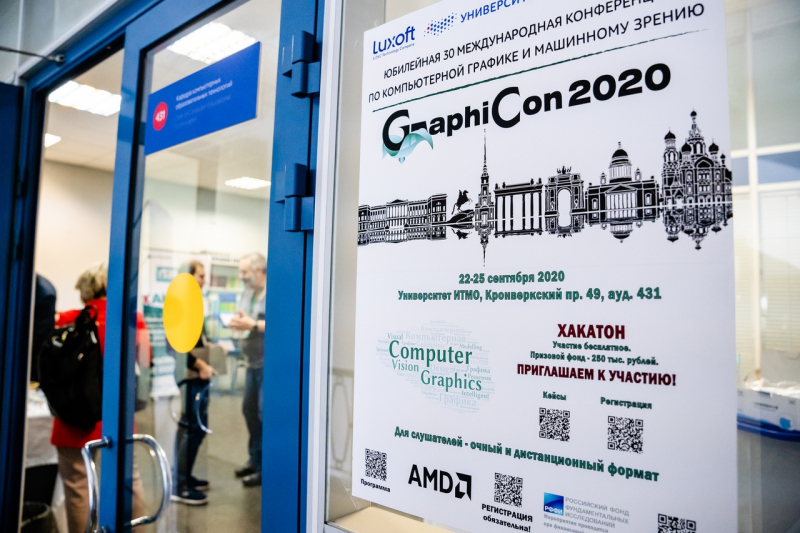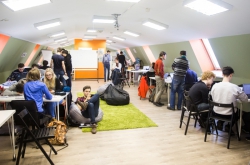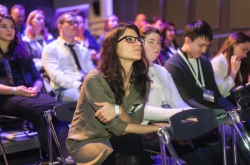“Even 30 years ago, at its inception, the conference was designed as an international one,” notes Pavel Kustarev, chairman of the event’s organizing committee and head of the Faculty of Software Engineering and Computer Systems. “Understandably, it dipped a bit in the 90s, but has risen to a higher level in recent years; we’re discovering new formats and young, enthusiastic people join the ranks of our participants and staff. This is because Russia has begun to consciously develop promising fields of science and tech on the national level and among the professional community; we’re gradually shifting from being users to being the creators of new methods and technologies. And people are becoming more interested in what’s presented at the conference.”
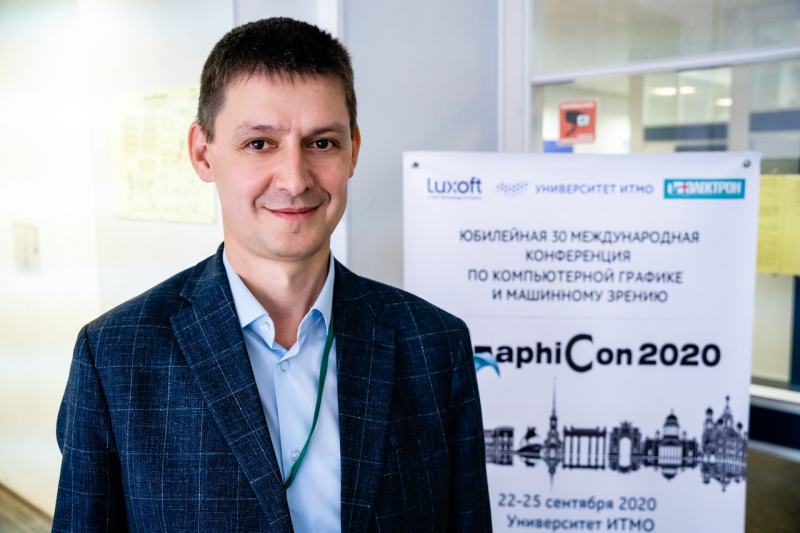
Due to pandemic-related complications, the 30th GraphiCon is being held in the blended format: many participants, especially those from other countries, take part in plenary sessions and other events online. But despite these difficulties, say the organizers, there is a great deal of activity: participants take part in discussions and present their research findings, inventions, and new products.
“We have participants from 10 countries including the USA, South Korea, India, and Germany,” says Sergei Bykovskii, an associate professor at the Faculty of Software Engineering and Computer Systems and a member of the organizing team. “They’ll be with us remotely due to the borders being closed. Starting from last year, compendiums from the conference are indexed by Scopus, which also attracts participants. A total of 187 reports have been submitted for presentation this year.”
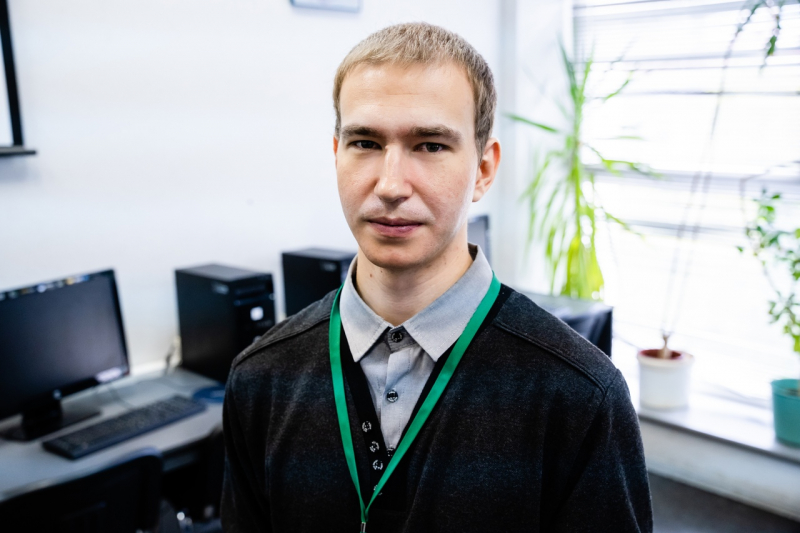
Trends, hot topics, and coronavirus
This year, the conference’s program consists of 12 sections dedicated to various fields of research: from computer graphics, machine vision, game engines, and VR/AR to artificial intelligence and specialized computing systems.
“We’ve introduced more sections this year,” says Pavel Kustarev. “Lately, attention around the world has noticeably shifted from simple applications of technologies based on synthesis and processing of visual data to the development of new applied methods and systems that can carry out those tasks. The hot topic is the use of AI and machine learning in computer graphics in the broadest definition of that term, as well as the design of specialized processors and GPUs capable of running these “heavy” algorithms in real time. That is why our conference is – not completely, but more than it used to be – also dedicated to machine learning data processing systems in fields such as medicine, unmanned vehicles, augmented and mixed reality, and photorealistic computer graphics.”
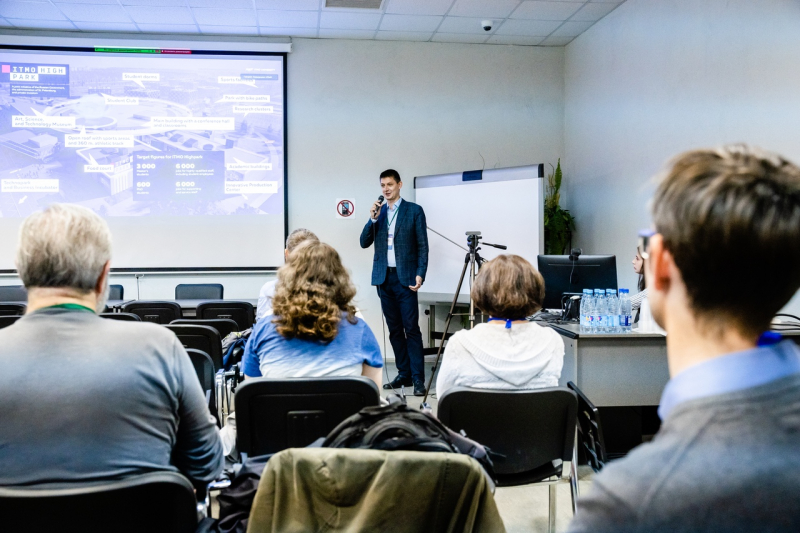
The most fascinating of the event’s reports will be presented by staff of the conference’s partner companies: processor and graphics accelerator manufacturing giant AMD and Luxoft, a subsidiary of DXC Technology and software engineering firm that creates products for some of the world’s top corporations including AMD, LG, Qualcomm, and many others. Both companies have long-standing relationships with ITMO University. Since 2020, Luxoft has been a partner on a corporate Master’s program at the Faculty of Software Engineering and Computer Systems.
Timour Paltashev, PhD, a senior manager at AMD, will report on the new GPU architecture RDNA, characterized by increased performance, lower energy consumption rate, and vertical scalability. The tech is expected to become the foundation for high-performance solutions in next-gen graphics and games.
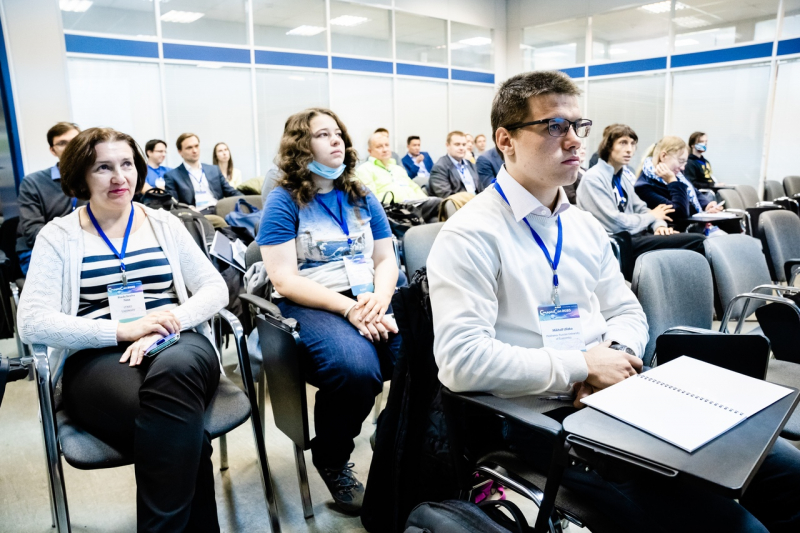
Kiriti Nagesh Gowda, a member of the Khronos Group, a consortium which focuses on the development of open standard APIs, will report on the MIVisionX toolkit – a set of libraries, tools, and applications that delivers highly optimized open-source implementation of OpenVX extensions.
Dmitry Kozlov of AMD will report on the cross-platform API Vulkan, designed for use in high-performance programming of graphics processors and its applications in photorealistic visualization.
Alexey Chernigin of Luxoft will speak about the use of machine learning techniques in computer graphics and present his own experience as the head of international projects centered on the development of automobile information systems used by major manufacturers.
The subject of coronavirus, too, has found a place among the subjects of this year’s reports.
“Our program includes a number of reports about the pandemic,” says Sergei Bykovskii. “Among their subjects are visualizations of various processes, such as the transmission of the virus, as well as the processing of COVID-19 patients’ X-ray shots. There are about a dozen or so reports the subjects of which are influences by what’s going on right now in the world.”

Control and security hackathon
In addition to the scientific program, the event’s schedule also includes a hackathon. Its participants will develop solutions related to the creation and improvement of customs inspection equipment.
“The task revolves around machine learning technologies used for customs inspection,” explains Sergei Bykovskii. “When you put your suitcase on the conveyor belt at the airport or railway station, a device must be able to identify whether you’re carrying anything illegal. The hackathon’s participants will develop and train neural networks able to recognize these dangerous objects.”
The competition will last for five days from September 21 till September 25. Its total prize pool amounts to 250,000 rubles. A partner and co-organizer of the hackathon is the company NIPK Electron, a leading Russian manufacturer of medical diagnostics, non-destructive testing, and security equipment.
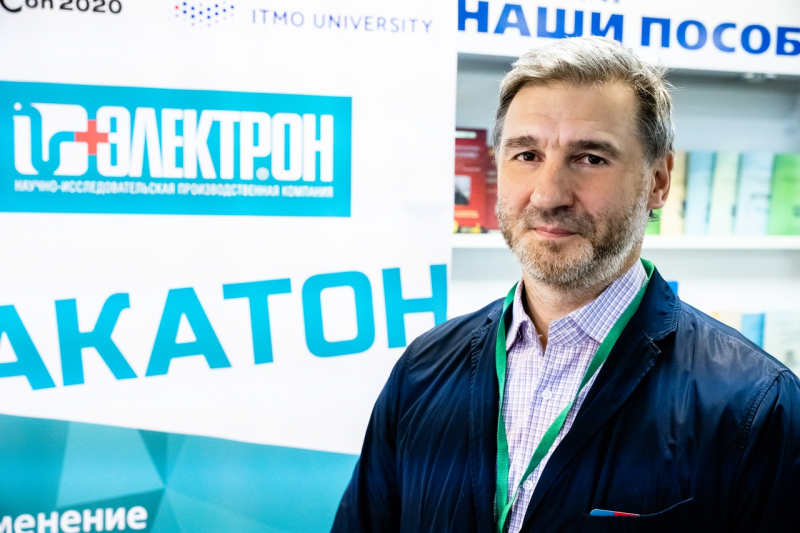
“Our specialty is in diagnostic X-ray equipment as well as solutions for non-destructive testing and security,” tells ITMO.NEWS Yury Leontyev, project director at NIPK Electron. “This is our first hackathon experience. We wanted to give it a try and gauge the response and competency level of the specialists who’d be taking part. As of the first day, the response has been significant. We hope that these are the people we’ll be working with if not tomorrow, then the day after.”
